We are witnessing the dawn of a “new grocery landscape” declared Booker CEO Charles Wilson at the City Food Lecture in February. “In the UK, times are changing. After 60 years of supermarket growth we have seen the sector slow down. The hare [has] become the tortoise.”
Wilson quoted IGD figures to back him up. With the convenience sector set to grow by 29% by 2020, versus a comparatively sluggish 8% for supermarkets, there will be “huge opportunities for astute suppliers,” claimed Wilson. “Quite simply, suppliers need to go where the growth is. Better to put your best products, best people and channel support into the growing sectors, rather than no-growth supermarkets.”
Wilson knows all about growth. This week Booker accelerated past Palmer & Harvey to become the UK’s biggest grocery wholesaler, delivering full-year sales of £4.7bn - up 34% from when he took over in 2005.
So how should the UK’s biggest suppliers be going about the task? What are the challenges? And who’s doing it particularly well right now?
“Convenience is a totally different game,” says John Boulter, MD of retail at DHL. Boulter knows everything about making the logistics transition from big to small since he drove Tesco’s move into convenience with Tesco Express in 1994.
“A supplier’s supply chain might be designed around a 24-pack that normally goes to a supermarket, but that same size pack could last a convenience store two weeks, so you have to deliver more frequently and in smaller amounts,” explains Boulter. “That leads to responsibility, sustainability and cost considerations. Cost per unit can increase and it is also not environmentally friendly. And considering the economies of scale suppliers need to ensure loads are full so it can ensure availability.”
As well as bulk pack sizes, smaller product formats are key - reflecting the on-the-go nature of the impulse channel. Mondelez has a long list of resized products it has recently launched into convenience, including single-serve packs of Belvita, Barny and Oreos, along with refill packs, smaller cases and smaller pack sizes of coffee, plus trial price-marked packs of Cadbury Dairy Milk Lu, Ritz and Marvellous Creations.
But miniaturisation is a key trend as the convenience trend caters increasingly to at-home consumption. “Size matters,” says Rob Sellers, director of shopper marketing agency Dialogue. “If you can deliver a product that the retailer can store more of in a smaller space, you not only reduce logistical impact, you meet the needs of the convenience shopper.”
“C-store customers want things they can carry away, and we are starting to see products like the reduced-size deodorant from Unilever, or Robinsons - not just the tiny squash’d pack, but also the double-concentrate bottle. It’s the same amount of drinks but half the weight for customers to carry home. As a retailer, if you’re selling a product that contains the same value in serves but takes up half the amount of shelf space, it doubles your retail density.”
Shape-shifting doesn’t just mean getting smaller, though. “We talk about stackability,” says Sellers. “Skips have a multipack where, rather than being in a loose multipack, the bags are stacked in regimental rows to produce a brick of Skips you can build into a display. So suddenly a multipack of crisps becomes stackable and much easier to merchandise in a smaller space.
“There is also a cone-shaped kitchen roll called Ora which stacks on top of itself. It’s gone from zero listings to 1,500 stores at Tesco, in 18 months. That’s a great example of a product that’s been specifically designed to use up less space on-shelf really taking off.”
Portability
On the booze side, c-stores are “hugely important” to the likes of Heineken as a channel for its innovation. Martin Porter, MD for the off-trade, points out that Desperados, the beer spiked with tequila that is currently the UK’s fastest-growing beer brand, performs “extremely well in convenience with nearly 50% of sales through c-stores.”
Heineken is constantly creating tailored offerings and propositions to appeal to convenience shoppers, including price marked packs and on-the-go pack formats,” he adds.
“Companies [that] have grasped the nettle and employed convenience specialists - they are the ones that will do well”
Laurence Olins, Poupart
As brewers prepared for the World Cup, AB InBev has placed similar importance on the convenience channel. Alongside new Budweiser branded chillers to sit in c-stores, filled with limited-edition gold bottles, it’s designed new handles to make its 18-can carry pack more portable.
On the soft drinks side, Britvic commercial director Nigel Paine says it is continually seeking to offer the convenience channel the right products and formats to suit the needs of their shoppers. “Last year we introduced a broader range of price-marked-packs and listened to customers’ concerns around space in-store and stock-holding levels. This led to a number of major lines being produced in smaller case sizes, such as 12-packs of Pepsi and 12 packs of 275ml Fruit Shoot, which were previously only available in 24-packs”.
CCE has enjoyed similar success with its introduction of a new 250ml can in July for “consumers on-the-go”: 12 weeks after launch it had sold five million cans.
Point of sale
Mondelez field sales director William Yates highlights the importance of innovative displays. Mondelez “invests heavily” in PoS development to help retailers create in-store features and to drive impulse sales. “We research the effectiveness of display materials and provide a range of sizes to suit the variety of stores in the convenience channel. We continually review our outer packaging to ensure the size and content is optimised, and we have introduced pusher cases for our confectionery.”
Rob Sellers also emphasises the importance of dedicated PoS. “There are lots of design initiatives with a really small footprint but a high density of product. Cadbury has one for its large dairy milk.
“It’s a good example of a brand saying to a retailer, ‘don’t worry, you don’t have to take anyone else off shelf that might be working for you, but here is a really interesting display unit that will sit in an unused corner of your very dense store and allow us to sell a product and you to make more money.’ An innovative display will also arm sales teams with another weapon to make a sale.”
The other key weapon in the battle for convenience is the sales force. Yet although suppliers are increasingly sold on the importance of convenience as a channel, they are adopting different tactics when it comes to field sales. Britvic, for instance, has started using third-party sales teams and wholesalers to help increase sales.
“We continue to adapt to the changing market, to ensure we have the most efficient and effective route to market for all parties,” explains Britvic’s Paine. “As part of a recent review we expanded our dedicated field sales force aimed at convenience, working closely with selected field sales providers. We are also keen to work with key wholesalers that can reach outlets faster and more effectively than a direct Britvic solution,” he adds.
Field sales muscle
On the other hand, and for the first time in a decade, United Biscuits has brought its operation in-house, investing in a new 30-strong national field sales team to work solely with convenience retailers. Hena Chandarana, trade communications controller at UBUK, says the new team will be “central to delivering the opportunity in the convenience channel. The team will guide store owners on delivering best practice ranging and merchandising at store level. They will lead the process of achieving category development professionalism that is currently seen in other big convenience categories.”
CCE has “nearly 1,000 people in field sales, calling on over 70,000 outlets across all channels of the trade. Approximately 800 of these are focusing on the convenience opportunity.”
Whether it’s outsourcing to third parties or boosting numbers in-house, the dedication to convenience is a growing trend. And it’s not limited to big packaged goods companies either.
Laurence Olins, chairman of soft fruit player Poupart is one of many small fresh-produce suppliers to add specialists to their client-facing teams who concentrate specifically on convenience.
“If you’re selling the same value in number of serves that takes up half the amount of shelf space, it doubles your retail density”
Rob Sellers, Dialogue
“Five years ago you would have had one account manager handling the major multiples. Now you need specialists for convenience, discounting and online. There was a point three or four years ago where we decided we needed to invest. Some companies have grasped the nettle and employed convenience specialists - and they are the ones that will do well. You can’t just have one account manager handling everything any more.
The only concern for Olins is the cost. “Convenience is a growth area, an area that shouldn’t be neglected, and isn’t being neglected by the leading suppliers. But the reality is supplying the majors is now a more costly exercise. and clearly that’s going to be a challenge for small and medium-sized companies. It’s the larger suppliers that will win out.”





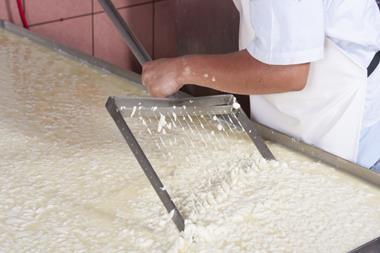
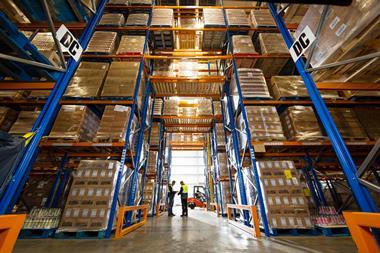



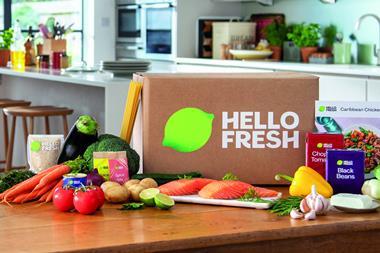

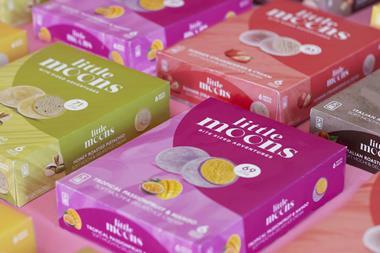

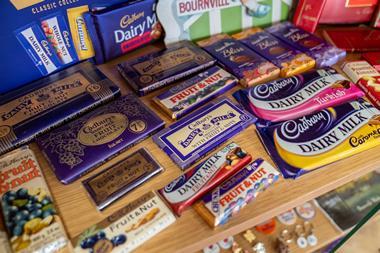
No comments yet